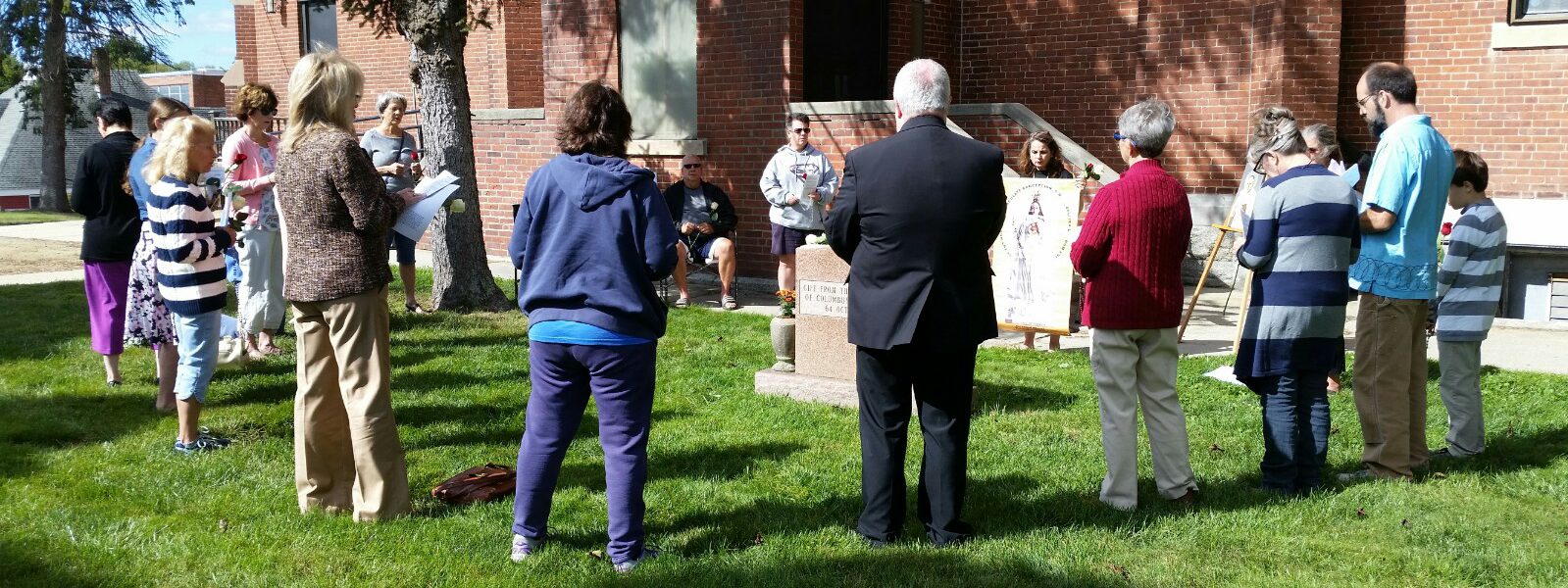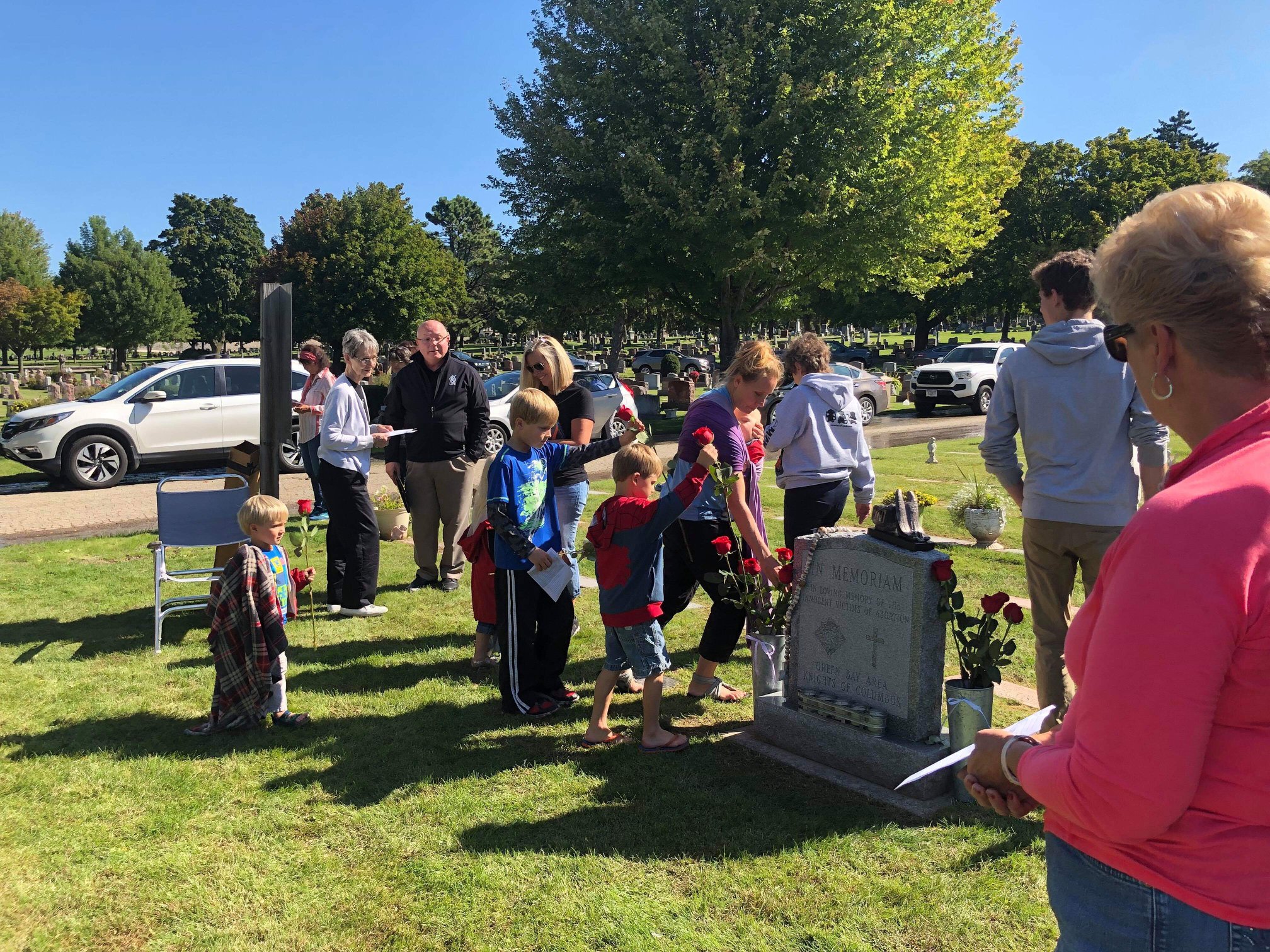Once you’ve signed on as the local leader for the National Day of Remembrance for Aborted Children in your community, it’s time to get started planning your event.
Here are the things you’ll want to get moving on right away to ensure you’ll have a successful event:
Remember, it’s never too early to invite guest speakers. In addition to securing your site and building your team, you’ll also want to give thought early on to any guest speakers you’d like to invite. You’ll find tips on who to invite and how to invite them here in the section on putting together your memorial service program.
Securing Your Day of Remembrance Site
The first step in planning your Day of Remembrance memorial service is to visit and secure your memorial site. You can’t host a memorial service if you aren’t familiar with the site or haven’t obtained permission from the proper authorities.
Visiting your gravesite or memorial
Your first step should be to visit the gravesite or memorial at which you plan to host the Day of Remembrance.
If the site is at a cemetery, it might difficult to find, and you may wish to phone ahead for the location or search for details online. Such sites are often located in a special section of the cemetery for unborn children and babies.
If you are unable to locate your memorial or gravesite, or if cemetery staff insist the site does not exist, please contact the national team and we’ll do all we can to help.
Visit the site and get a feel for the space you have available. Where will people stand? Where will your emcee and other speakers stand? Do you need a sound system, or even a platform? If so, where will it go?
Think about these sorts of logistical questions well in advance of the Day of Remembrance so you have plenty of time to plan out solutions.
And while you’re there, offer some prayers of mourning for our aborted unborn brothers and sisters, and ask Our Lord to bless all your efforts organizing the Day of Remembrance.
Obtaining permission to hold your memorial service
Contact the people in charge of your site to get permission to hold your Day of Remembrance memorial service—whether that’s a cemetery manager, church secretary, pastor or even city authorities, if your memorial is on public land.
If your site is at a cemetery, be prepared for the likelihood that the cemetery staff will not be aware of the presence of your gravesite or or other memorial marker, which may have been placed years ago. You may even have to show them the site yourself, in person. Also be prepared to work around other planned events at the cemetery, which may even require you to modify the time of the service.
If your site is at a church, you’ll need permission from the pastor or another person in authority to host the Day of Remembrance there. If you know a parishoner at the church, your best bet will be to work through them as they’ll already be familiar with the best person to get in touch with.
See the section on Promoting your memorial service in local churches for more specific information on how to mobilize local churches, both Protestant and Catholic, in support of your memorial service.
If your site is on public land, you may need to contact the municipal government for permission to host your event. Since few of the memorials for the unborn are located on public land, please contact the national team for more information.
Once you’ve identified the right person to talk to, respectfully request permission to host the Day of Remembrance there. Let them know what the memorial service is all about, especially when you’d like to hold it and how long it will last. (Typically, the service will be held at in the afternoon and will last approximately one hour. See “Your memorial service plan and program” for more details.)
Emphasize that this event is not an anti-abortion protest or political event, but a prayer service in remembrance of the victims of abortion.
If you think you’ll be using any special equipment—like a sound system, stage or podium—let them know.
To help with this outreach, the National Team has prepared a Sample Request to Host a Service, which you can download and modify with specific information about your planned memorial service. There are two versions of this sample letter, depending on the type of location:
- Request to Host a Service at a Gravesite (where fetal remains are buried)
- Request to Host a Service at a Memorial Marker (not a gravesite)
Problems securing your site?
If those responsible for your site refuse permission to host the Day of Remembrance or you run into any other problems securing your site, please contact the national team for help.
Building your local leadership team
To make your memorial service the best it can be, seek out a team of people to help you out. If you put together a good leadership team, your job will be much easier, and your memorial service is sure to be a great success.
Choose people who you know will follow through on tasks. The more tasks you can delegate to trustworthy people, the more time you’ll have free to oversee a successful Day of Remembrance.
Holding a planning meeting
One great way to recruit helpers for your memorial is to hold a planning meeting. Put the word out via e-mail, among your church contacts and through any other networks that can help you reach competent, motivated helpers. Make it clear people can help even if they’re not able to attend the service itself.
At the meeting, explain the Day of Remembrance effort and what kind of help you’ll need. Have a list of jobs that people can take on and explain their scope. Offer people the opportunity to sign up on the spot while they’re enthusiastic about the project.
Assigning jobs to team members
There are many different levels of involvement you can offer people with varying degrees of commitment. Jobs you could seek help with include:
- Media Manager to prepare a list of local media, inform them about the Day of Remembrance and talk to reporters both in advance of the memorial service and on the day of the event.
- Social Media Manager to promote your event on Facebook and build buzz about it on other social networks like Twitter. If possible, this person should be available to tweet and post pictures and updates to Facebook live from the memorial service as well.
- Catholic and Protestant Church Liasons to invite participation in the Day of Remembrance among all the faithful. These individuals should be familiar with how the churches of each faith tradition are organized (see Promoting your memorial service in local
- churches).
- Speaker Recruiter to invite special guests to speak or offer prayers at your memorial service. This person should be well connected, outgoing and known for follow-through.
- Sound and Stage Manager to obtain, set up and break down any special equipment you might need like a sound system or stage.
- Communications Manager to gather and organize an e-mail list and send through it (see Promoting your memorial service through email).
Thinking ahead to the Day of Remembrance
Be sure to think ahead to your Day of Remembrance memorial service and the myriad jobs that will need to be taken care of that day. You don’t want to find yourself shorthanded on that day, when you need to concentrate on making sure everything comes together smoothly.
See also the list of jobs that need to be done on the Day of Remembrance here, such as emcee and photographer. You can recruit for these jobs as well at your planning meeting.

